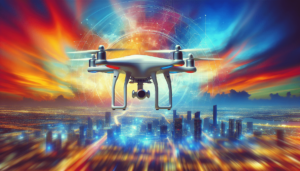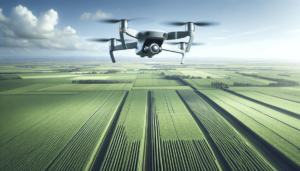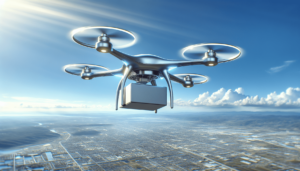How do we truly measure the impact of climate change on our environment? As I navigate through the perplexing maze of climate science, I find myself increasingly drawn to the skies. Up there, at the intersection of technology and nature, lies a powerful tool: drones. With their nimble frames and bird’s-eye view, drones have emerged as essential allies in the quest to understand our planet’s evolving climate.
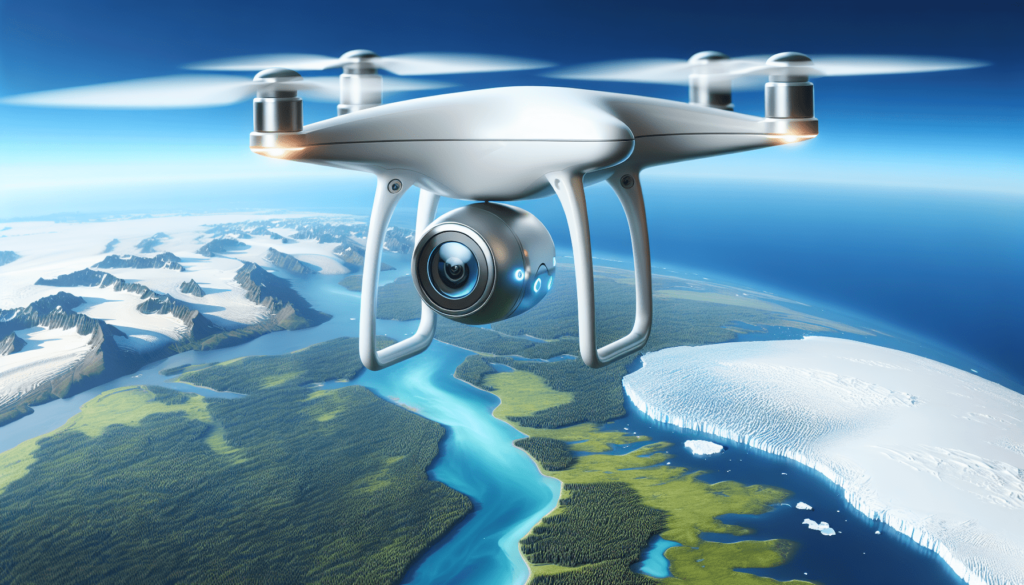
Why Drones?
When it comes to monitoring climate change, you might wonder why I, or perhaps the scientific community, would place such significant emphasis on drones. Traditional methods of data collection—satellite imagery, field research, and automated sensors—each have their merits and limitations. Satellites offer vast coverage but often lack the granular detail needed to study specific areas. Field research offers precision but is labor-intensive and confined to accessible terrains. This is where drones, with their ability to bridge both ends of the spectrum, come into play.
These compact, versatile flying machines offer a keen eye for detail, the agility to reach otherwise inaccessible locations, and the adaptability to perform a wide range of tasks. They provide the detailed, localized data required to study microclimates while maintaining the broader scope necessary to identify overarching climate patterns.
The Role of Drones in Climate Science
Drones are not only avenues for breathtaking aerial photography but also sophisticated platforms for scientific instruments. They carry an array of sensors tailored for climate research, ranging from thermal imaging cameras to atmospheric pollutant detectors. With increasing flight duration and payload capacities, drones are evolving rapidly, enhancing their utility in environmental monitoring.
Temperature Monitoring
One of the most critical indicators of climate change is temperature variation. Drones equipped with thermal cameras can measure land and water temperatures at various points, offering valuable insights into warming trends. Unlike satellites, drones can fly at lower altitudes, covering diverse landscapes and providing data crucial for assessing localized impacts of climate change.
Atmospheric Analysis
These nimble devices can reach altitudes where conventional ground-based monitoring systems fall short. By outfitting drones with atmospheric sensors, I’m able to collect data related to greenhouse gases, particulates, and other pollutants. Armed with such data, we gain a clearer understanding of anthropogenic impacts on the atmosphere.
Vegetation and Land Use Mapping
Drones with multispectral and hyperspectral imaging capabilities allow for the precise mapping of vegetation health and land use. Tracking vegetation indices provides insight into drought conditions, deforestation rates, and agricultural impacts, which are often direct consequences of climate shifts.
| Aspect | Drone Capability |
|---|---|
| Temperature Monitoring | Thermal cameras measure variances across specific areas, enabling precise tracking of warming trends. |
| Atmospheric Analysis | Equipped with sensors to detect greenhouse gases and air pollutants. |
| Vegetation Mapping | Provides detailed imagery to assess plant health and land changes. |
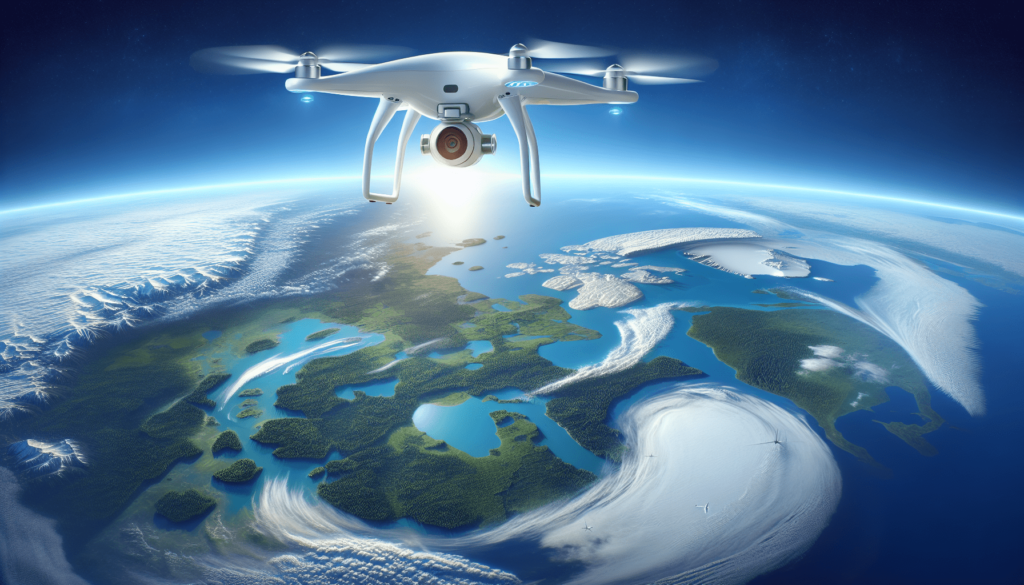
Case Studies: Real-World Applications
To truly appreciate how drones contribute to the fight against climate change, let me walk you through some real-world examples where they have made significant impacts.
Drones in the Arctic
The Arctic is one of the most vulnerable regions to climate change, providing compelling reasons to deploy drones. In the harsh, unforgiving conditions of the Arctic, each flight represents a blend of hope and meticulous planning. Drones have been instrumental in mapping ice sheets, tracking glacial movements, and measuring albedo—a measure of the reflectance or brightness of a surface. Through such efforts, scientists can better predict sea-level rise and understand the dynamics of this critical ecosystem.
Monitoring Coral Reefs
Drones have ventured into coastal regions to monitor the health of coral reefs—key indicators of marine biodiversity. With their ability to cover large swathes of ocean rapidly, drones equipped with high-resolution cameras and spectrometers can detect bleaching events and track changes in coral cover. This data helps in studying the impacts of ocean acidification and rising sea temperatures on these delicate ecosystems.
Forest Surveillance
From dense rainforests to sparse woodlands, drones are invaluable tools for forest monitoring. They help in tracking deforestation, forest degradation, and recovery, providing data crucial for carbon offset projects and biodiversity conservation.
The Challenges of Using Drones
Like any technology, drones come with their own set of challenges that need addressing to optimize their use in climate research.
Regulatory Hurdles
Navigating through various countries’ airspace regulations can be a daunting task. Obtaining the necessary permissions and ensuring compliance with local laws requires careful planning and coordination.
Technical Limitations
Despite rapid advancements, drones still face limitations in flight duration and payload capacity. Battery life, in particular, can constrain the extent and range of data collection missions.
Ethical Considerations
I must also consider the ethical implications of drone use, especially concerning privacy and potential disturbances to wildlife. Ensuring that operations are ethical involves finding a balance between environmental benefits and societal concerns.
| Challenge | Details |
|---|---|
| Regulatory | Airspace laws and permissions vary by region. |
| Technical | Limited battery life affects data collection range. |
| Ethical | Privacy concerns and wildlife disturbance must be managed. |
Innovations on the Horizon
Recognizing these challenges, ongoing research and development efforts are focused on enhancing drone capabilities. Improvements in battery technology, for example, can lead to longer flight times, while advancements in sensor miniaturization could increase data collection efficiency.
AI and Machine Learning
Incorporating AI and machine learning into drones can significantly enhance their analytical capabilities. These technologies enable drones to process data in real-time, identifying patterns and anomalies with precision that exceeds human capabilities.
Swarm Drones
Swarm technology, wherein multiple drones work in coordination, offers unprecedented opportunities for climate monitoring. Such configurations can cover extensive areas simultaneously, collecting massive datasets that provide a holistic view of environmental conditions.
The Future of Drones in Climate Research
Looking ahead, I am optimistic about the role drones will play in climate research. Their adaptability and capacity for real-time data collection position them as critical tools in our fight against climate change.
Integration with Other Technologies
The integration of drones with other technologies, like satellite data and ground sensors, will create a comprehensive framework for environmental monitoring. This synergy enables cross-validation of data, increasing accuracy and reliability.
Broader Applications
Beyond monitoring, drones also pave the way for active intervention. In agriculture, drones can optimize water usage and pesticide application, enhancing sustainability. They can also assist in reforestation efforts through seed dispersal over vast areas.
Conclusion
As I contemplate the complexities of climate change, the potential of drones to transform how we study our planet is both exhilarating and humbling. These aerial companions allow us to peek into the earth’s intricate systems from a vantage point once reserved for our feathered friends. They draw the line between chaos and understanding, providing clarity in an otherwise murky sea of uncertainty.
So, how do we measure the impact of climate change? With drones, the sky isn’t the limit—it’s just the beginning. As we continue to refine their capabilities, these remarkable tools promise to unlock solutions crucial for preserving the world as we know it, or perhaps even, the one we aspire towards for future generations.
In this high-stakes game for the planet’s future, drones offer not just a tactical advantage but also a symbol of our persistence and ingenuity.
